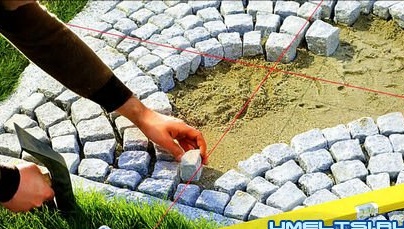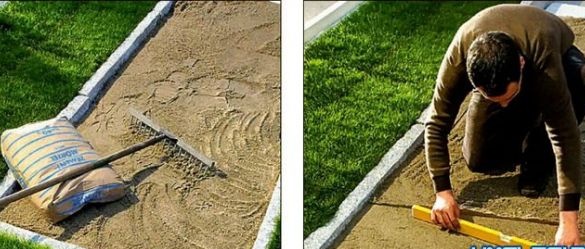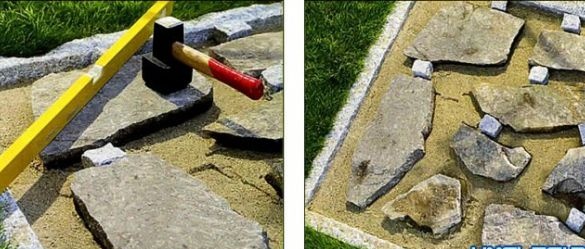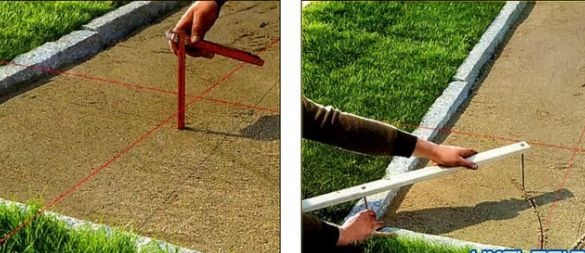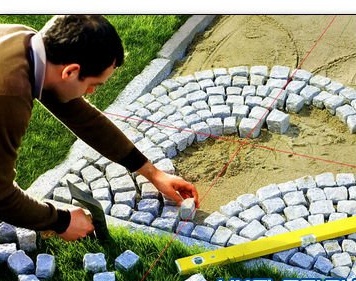
Paths and grounds in the garden are an important part of the appearance of any site. Therefore, the choice of stones for paving should be taken very seriously.
Before buying a stone
Before you buy a stone, you need to familiarize yourself with the technology of its processing. For example, concrete stones or clinker rectangular bricks are quite simple to process and have exact dimensions. Therefore, such material is quite suitable for a not too experienced master for arranging a track do it yourself.
Ideal paving is when the width of the path is enough for laying the whole stones on the sand cushion, since their precise cutting will require serious tools and a lot of time. The straight edges of the stones allow laying with a seamless method. But, calculating the width, it is necessary to make a "margin" of 1-2 cm, for adjustment.
Paving and rubble stone masonry
To pave the track from uneven rubble stones or concrete rectangular stones of different sizes, you need to have a good eye and skill. Aligning stones of various heights on a sand cushion is a laborious and lengthy process. However, you can slightly ease your work if you preview the stones and remove specimens with the most uneven projections.
Due to the uneven size, rubble stone cannot be paved with even seams. But, this is not worth making a big problem. The gaps can be filled with sand, a crumb of paving slabs or give moss sprouts. The “wild” paving of a concrete stone path is carried out according to a specific pattern grid, which is a guideline for laying stones of unequal sizes.
We lay the rubble stone with our own hands
1. For a stronger fixation of small stones in the sand cushion, you need to add cement. If sand is supposed to be used to fill the joints, it must also be mixed with cement.
2. For laying natural stone, the sand cushion should not be compacted. It is aligned using a level or rule. The slope should be 2 °.
3.When laying between stones, it is necessary to leave space for one granite cube. Cubes in this case will serve as distance elements.
4. The chop cord is stretched along the height of the finished sidewalk with the addition of 1 cm. To shrink. The rubble stone is leveled with a sledgehammer with a threaded nozzle.
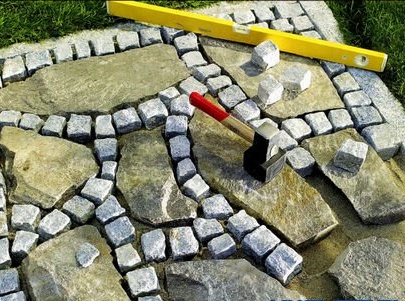
Circles, arcs and scaly patterns
To make laying stones in the form of arcs, circles, segments of cuboid granite, considerable experience and skill will be required. Such paving requires high precision work, because each stone must be sized. Then the correct geometry of the pattern will be preserved. To do this job efficiently, you should first make marks on the location of arcs in the sand using a homemade compass made of nails.
It is always necessary to start laying with an arc, and then move to the center of the circle. At the same time, the size of the stones usually decreases gradually. Therefore, you will need to use at least two different formats of stones.
Natural stone laying methods
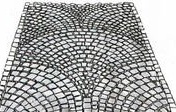
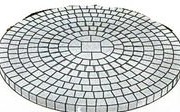
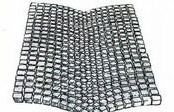
Circles
At the beginning, lay out a square of 4 stones in the center. After, large stones are laid from the middle. The size of the seams is reduced.
Scaly pattern
First, stones are laid along the outer arc. Then they go down, laying out subsequent arcs. The size of the stones is from larger to smaller.
Segments
The laying principle is the same as that of the scaly pattern. Only the shape is different. Stones are stacked from the outside to the inside.
We spread arcs master class
1. The sand cushion is leveled to the final height, +1 cm. Height control is carried out by stretched cords at the points of their intersection. They also indicate the center of the arc.
2. Circles are drawn with a homemade compass from the corners of the track. Their radius corresponds to half the width of the track.
3. Pull the cord through both points of intersection of the quarters of the circles with the curbs. Draw a semicircle from the point of intersection with the axial cord.
4. The axis will have a width of one stone. After laying the cubes, brush the seams with a brush.
